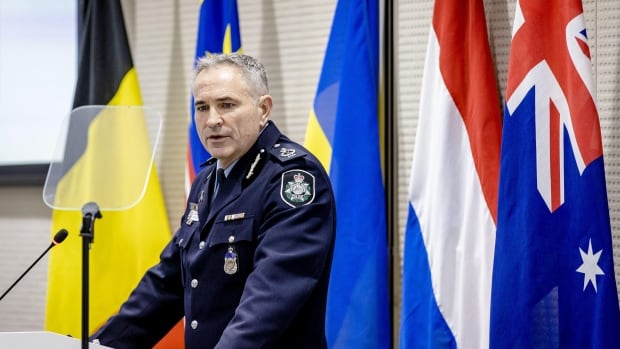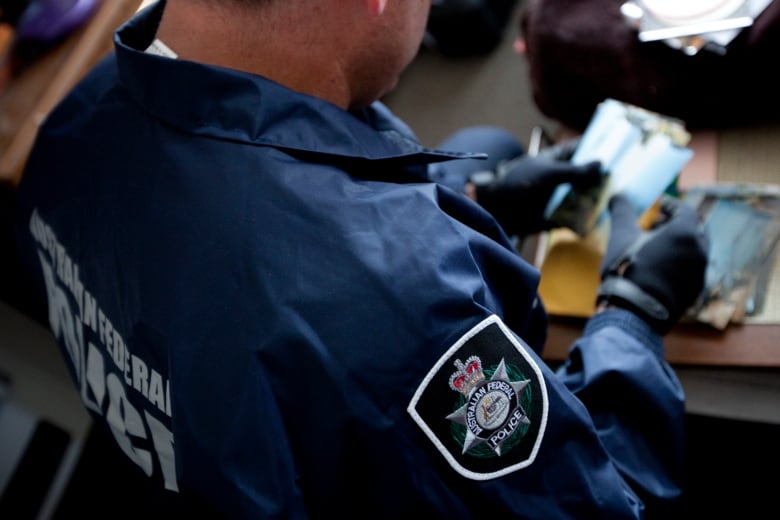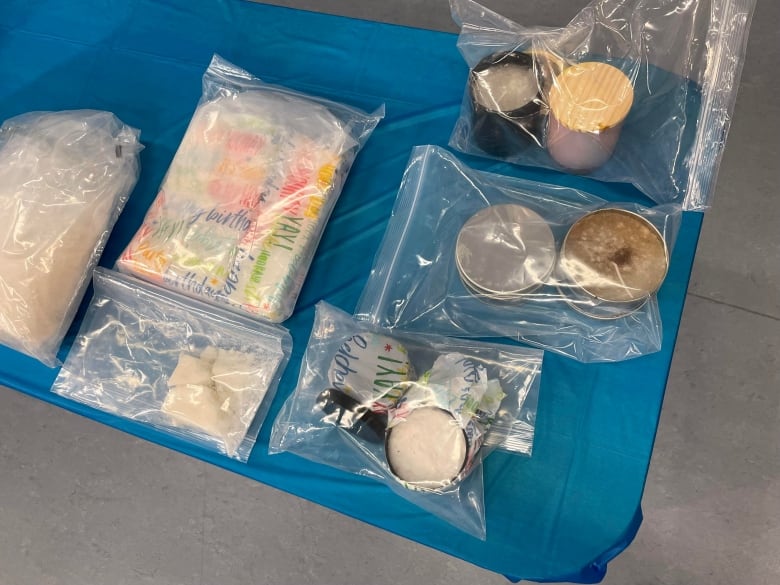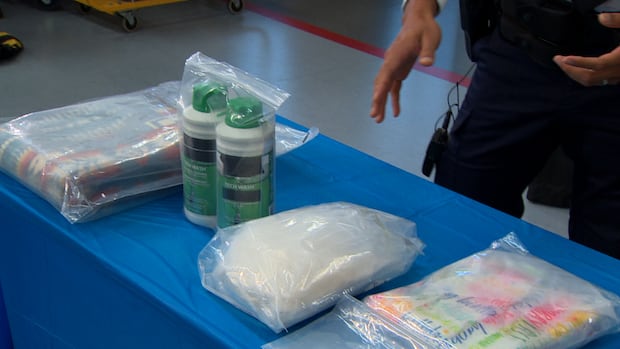
A birthday present, candles, soap and a blanket — all separate and failed decoys used by criminals to attempt to smuggle methamphetamine out of Canada and into Australia over the past 5 months.
The items, which were intercepted in Vancouver, contained close to 1,300 litres of the drug in liquid form and another 400 kilograms of the crystallized version. They were part of a show and tell the Canada Border Services Agency (CBSA) held in Richmond this week, to highlight an increase in drug seizures from packages destined for Down Under.
It’s a trend Canada’s border agents say is unwelcome.
“Our country should not be seen by criminals as a place that exports dangerous drugs,” said Linell Redmond, director of CBSA’s Intelligence and Investigations Division for the Pacific region.
“We are refusing to be the driver of methamphetamine distribution”.
More Canadian meth than ever is ending up in Australia as criminals use increasingly clever tricks to smuggle it in, according to border officials in both countries. More meth is now entering Australia from North America than from Southeast Asia.
Nevertheless, the Australian Federal Police (AFP) — the country’s national policing agency — says it is seeing meth from Canada arrive on its shores.
The intercontinental trafficking is no surprise to the agency.
‘Extraordinary profits’
David McLean, AFP’s assistant commissioner, said many criminal gangs know Australian drug users are willing to pay among the world’s highest prices for illicit substances.
“[There are] extraordinary profits for those prepared to roll the dice and get involved,” he said.
The price difference between the cost of meth in Canada and Australia is staggering.
In 2023, a gram of meth in Vancouver could be bought for about $60, according to research by Canada’s Department of Justice.
The same amount in Australia would sell for more than $275 Cdn in 2024, as reported by the Australian Broadcasting Corporation.
Large seizures made in both countries show criminals are betting on big paydays for bringing drugs into Australia. The Australian Federal Police says more than 35 kilograms of meth has been found in the suitcases of Canadians at Australian airports, since the start of August.

In September, the AFP charged three men for attempting to bring 1,280 litres of liquid meth from Canada to Australia, concealed as bottles of apple and grape juice. In that case, RCMP replaced the meth with another inert substance in Vancouver, before allowing the shipment to continue to Brisbane. The AFP then followed the shipment to its delivery address before making arrests.
Criminals are getting more sophisticated in their concealment methods, Australian Border Force member Penny Spies said. But, she added, the September operation was a prime example of how intelligence sharing can put the pin in the activities of criminal gangs.
“[Officers] love it when they find a really large seizure and we work with our law enforcement partners to get to the criminal groups that sit behind it,” she said.
Canada’s border services agency wouldn’t say if the meth being seized enroute to Australia is actually made in Canada in large-scale laboratories — so-called ‘super labs‘ — or if it’s shipped from elsewhere.
But it’s not just methamphetamine moving through Canada for export.
Fentanyl is being sent too.
Unprecedented seizures
In 2021, Australian police seized the largest fentanyl shipment they have ever detected, pulling 11 kilograms of the powdered drug and 30kg of meth from inside an industrial wooden lathe in Port Melbourne.
The package was sent from Canada.
Up until then, the largest amount of fentanyl Australian authorities had ever found was less than two tablespoons.
Late last year, the head of the RCMP unit responsible for fighting organized crime, Mathieu Bertrand, told CBC’s The House that Australia and New Zealand were known destinations for Canadian-made fentanyl.
The fact that Canadian gangs are exporting the highly potent opioid abroad speaks to a glut in the local market or lucrative markets abroad, he said.
That suspicion was backed up in an undated briefing note prepared for the deputy minister of Health Canada, obtained by CBC News through an access to information request.
“It is widely believed that excess product is being exported to lucrative international markets,” the note reads.
McLean, the assistant commissioner with the Australian Federal Police, said he finds this disappointing.
“We’re very familiar with the fentanyl crisis over there,” he said, referencing Canada. “We are fortunate, for the time being, that it has not landed [in Australia] at the same scale and with the same impact.”

A cautionary Canadian tale
The toxic drug crisis in Canada, particularly in Vancouver’s Downtown Eastside, has become a cautionary tale worth studying for researchers in Australia.
Citing the “global reach” of the fentanyl crisis, a qualitative paper published this year compared the experiences of drug users in Brisbane and Vancouver, and concluded that the arrival of fentanyl in Australian street drugs underscores “the urgent need for effective harm reduction strategies”.
The paper’s co-author Tim Piatkowski, a lecturer from the School of Applied Psychology at the University of Griffith, said it’s “super, super common” for people in Australia to have fentanyl in their supply and not even realize it.
He added that trends there might “keep shifting in the same direction” as Vancouver, given the “global impact of these substances.”
The Canadian and Australian agencies working to keep illicit drugs from circulating inside their jurisdictions say the best defence is collaboration and intelligence sharing.
Last month, the Australian Border Force hosted CBSA officers in Melbourne for training and exercises. The partnership was billed in a news release as a way to “combine forces to target criminal infiltration in global supply chains.”
In a world where criminal gangs are more interconnected and advanced in their drug trafficking, working with Canadian authorities is the best way to disrupt the movement of illicit drugs, Australian Border Force member Penny Spies said.
“We’ll just keep working together to get to the very top of the criminal syndicates that keep exploiting our borders.”
